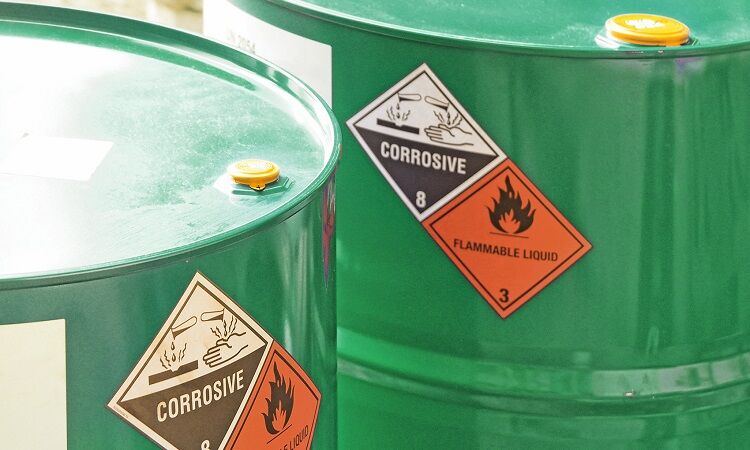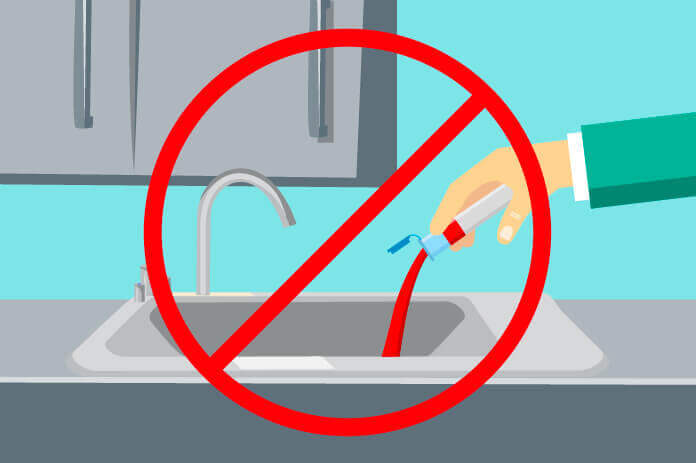Safe and Sustainable Liquid Waste Disposal: Your Go-To Service Provider
Safe and Sustainable Liquid Waste Disposal: Your Go-To Service Provider
Blog Article
How Liquid Waste Disposal Functions: A Thorough Overview of Strategies and Technologies Employed

Introduction of Fluid Waste Kind
The complexity of liquid waste kinds necessitates a comprehensive understanding of their qualities and ramifications for disposal. Liquid waste can broadly be categorized into a number of kinds, consisting of industrial, local, farming, and contaminated materials. Each group shows distinct properties, requiring specific monitoring approaches to minimize environmental and health risks.
Industrial fluid waste originates from manufacturing procedures and commonly consists of a range of impurities, such as hefty metals, solvents, and natural substances. Community fluid waste, mostly comprising wastewater from households and business establishments, has raw material, nutrients, and virus (industrial wastewater treatment). Agricultural liquid waste, including overflow from farms, may contain plant foods, pesticides, and pet waste, positioning threats to water high quality and communities
Harmful fluid waste is characterized by its toxicity, sensitivity, or possible to trigger injury. Understanding these varied fluid waste kinds is important for creating effective disposal methods and making sure conformity with ecological regulations.
Physical Treatment Techniques

Screening is the initial step, where larger particles and particles are gotten rid of from the fluid waste utilizing screens or grates. This process protects downstream equipment from damages and makes sure smoother procedure. Complying with screening, sedimentation utilizes gravitational pressure to separate solids from liquids. In sedimentation containers, larger bits work out at the bottom, creating a sludge layer, while the made clear liquid can be further treated.
Filtration is an additional important approach that includes passing the liquid via porous products, such as sand or membranes, to capture smaller sized particles. This action enhances the top quality of the liquid, making it ideal for subsequent therapy processes.

Chemical Therapy Methods
Chemical treatment methods are essential for properly managing fluid waste, particularly in resolving dissolved and colloidal impurities that physical methods might not properly eliminate. These techniques use numerous chemical agents to counteract, precipitate, or change unsafe substances right into much less damaging kinds.
One common technique is coagulation and flocculation, where chemicals such as alum or ferric chloride are contributed to advertise the aggregation of suspended fragments. This process improves sedimentation, permitting easier removal of the resulting sludge. In addition, oxidation procedures, employing agents like chlorine or ozone, are utilized to damage down intricate natural compounds and microorganisms, making the waste more secure for discharge or further treatment.
Neutralization is one more essential technique, which adjusts helpful site the pH of acidic or alkaline waste streams to neutral levels, stopping possible injury to downstream systems and the environment. Furthermore, advanced oxidation processes (AOPs) make use of mixes of oxidants and ultraviolet light to degrade persistent pollutants, achieving a higher level of treatment efficiency.
Biological Treatment Processes
Biological treatment processes play an essential function in the monitoring of liquid waste by making use of bacteria to decompose natural issue and lower pollutant levels. These processes can be broadly categorized into aerobic and anaerobic therapies, each using certain microbial neighborhoods to accomplish efficient waste degradation.
Aerobic therapy entails the usage of oxygen to assist in the break down of organic products by microorganisms. This procedure is frequently executed in activated sludge systems, where oygenation containers supply a favorable environment for microbial growth, leading to the oxidation of natural contaminants. The resultant biomass can be separated from dealt with effluent via sedimentation.
In comparison, anaerobic treatment occurs in the lack of oxygen, counting on various germs to break down raw material. This method is specifically beneficial for high-strength waste, as it generates biogas, a renewable resource resource, while minimizing sludge production. Technologies such as anaerobic digesters are regularly utilized in industrial and metropolitan applications.
Both anaerobic and cardio biological therapies not only minimize the ecological impact of fluid waste but additionally assist in resource recuperation, making them crucial parts of sustainable waste monitoring techniques. Their performance, efficiency, and adaptability support their extensive implementation across numerous fields.
Arising Technologies in Disposal
Innovative approaches to fluid waste disposal are rapidly evolving, driven by innovations in modern technology and a boosting focus on sustainability. Amongst these emerging innovations, membrane layer bioreactors (MBRs) have actually acquired traction for their capacity to integrate organic therapy with membrane layer purification, leading to top notch effluent that can be reused in numerous applications. MBRs allow smaller sized impacts and much more efficient procedures compared to typical systems.
One more appealing development is using anaerobic digestion integrated with nutrient recuperation modern technologies, which not only deals with liquid waste yet also produces biogas and recoups valuable nutrients like nitrogen and phosphorus. This dual advantage enhances resource performance and minimizes ecological influence.
In addition, advanced oxidation processes (AOPs) are being adopted for the degradation of complex natural contaminants. These approaches use powerful oxidants and catalysts to damage down pollutants at the molecular degree, offering a very effective solution for challenging waste streams.
In addition, the assimilation of man-made knowledge and device knowing in waste monitoring systems is optimizing functional effectiveness and anticipating upkeep, resulting in minimized costs and boosted ecological compliance. These modern technologies news mirror a significant shift in the direction of more lasting and efficient liquid garbage disposal practices.
Verdict
Finally, effective fluid waste disposal necessitates a detailed understanding of various techniques and innovations. The integration of physical, chemical, and organic treatment techniques ensures the effective management of diverse waste kinds. Moreover, the emergence of ingenious technologies improves therapy efficacy and promotes sustainability in waste monitoring practices. By constantly progressing these approaches, it comes to be feasible to deal with the expanding obstacles related to fluid waste, ultimately adding to ecological defense and resource healing.
Liquid waste disposal is a vital facet of ecological monitoring, requiring an extensive understanding of different strategies and modern technologies tailored to different waste types. Liquid waste can extensively be categorized right into a number of kinds, including industrial, community, agricultural, and dangerous waste. Agricultural liquid waste, including runoff her response from farms, may consist of plant foods, chemicals, and pet waste, presenting dangers to water top quality and communities.
Different physical treatment techniques play a vital function in managing liquid waste effectively - industrial wastewater treatment.In conclusion, effective liquid waste disposal necessitates an extensive understanding of various techniques and technologies
Report this page